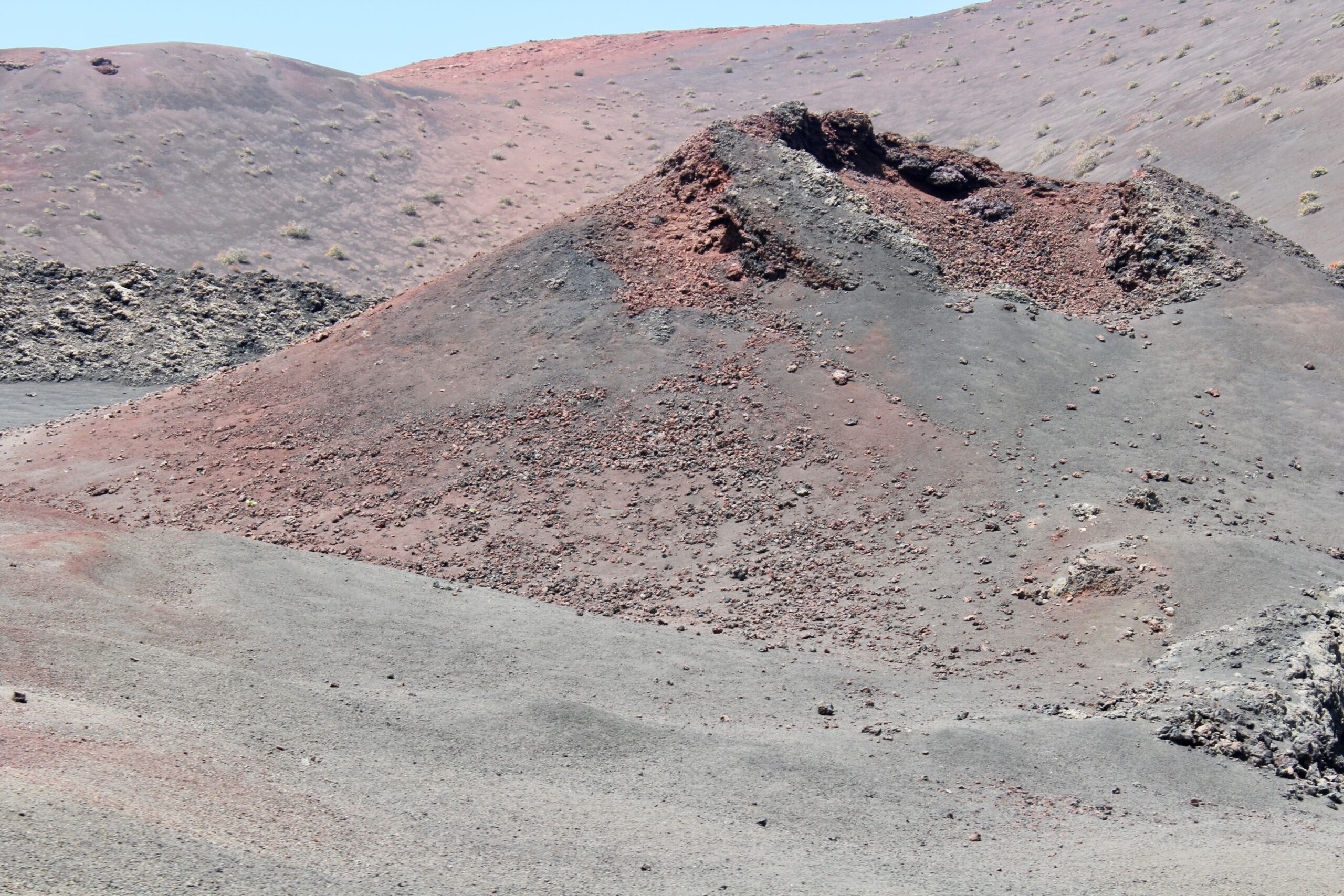Lanzarote is unique among the Canary islands – it is well developed in terms of communications and services but has not suffered from the ugly over-development that has blighted some of the other islands. This is mainly thanks to the enthusiasm of Cesar Manrique, a local artist and architect whose sadly Francoist politics we are willing to ignore because of his tireless efforts to preserve the heritage and environment of Lanzarote. For example, preventing erection of any billboards or multi-storey buildings outside the main tourist ghettoes (OK, they’re nice places if you like that sort of thing!). The tourist attractions he helped to develop are all (we think) tastefully unobtrusive. He built his world-famous house in Tahiche (on a section of the world’s longest terrestrial lava flow) but moved to Haría a couple of years after we arrived here, building a home in the next street from Calle la Cañada and living there till he died in 1992.
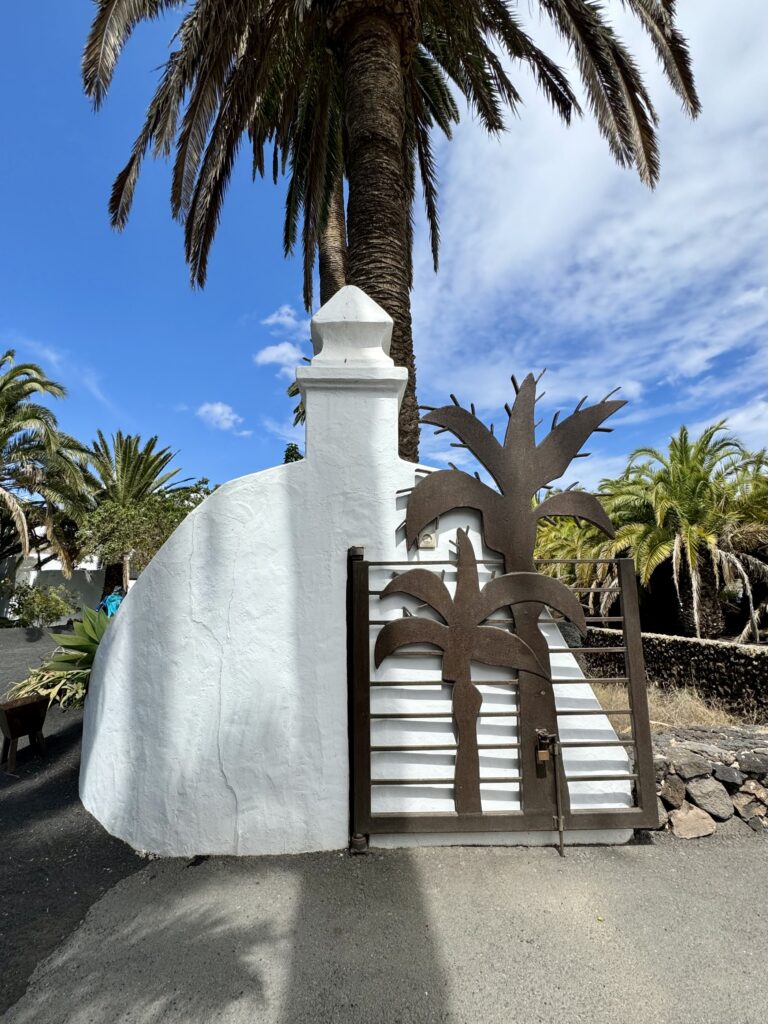
Entrance to Manrique’s house in Haría, which is now a museum.
Most of Lanzarote’s official tourist attractions have been designed with the architect Cesar Manrique’s trademark features, somehow managing to be both striking and unobtrusive. This is a link to an excellent photographic appreciation of Manrique’s architecture.
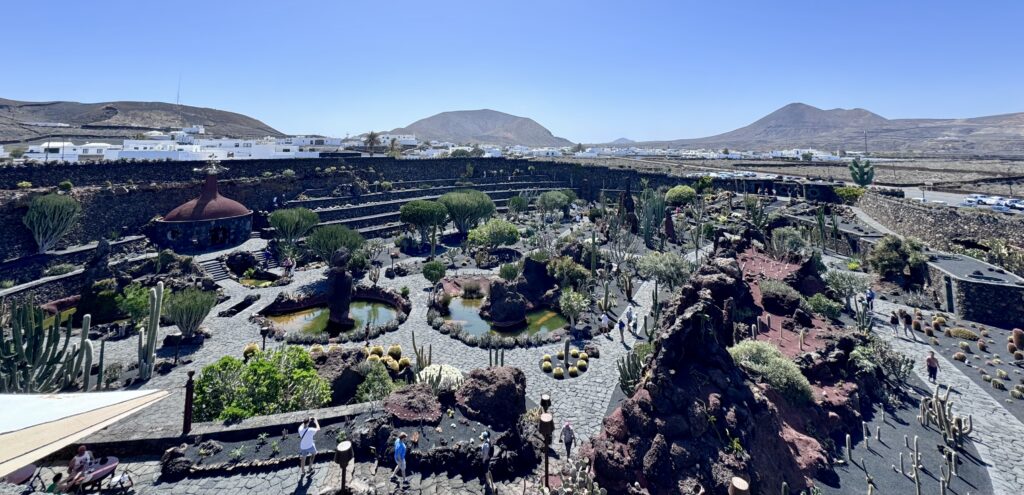
The Cactus Garden is an abandoned quarry that had become a rubbish dump was converted to house an impressive collection of cacti and other succulent plants. It is in the centre of the cactus farming district of Guatiza. The ancient tradition of cultivating the cochineal insect which produces the red dye carmine (used for Campari, lipstick, etc) has undergone a recent revival as the danger of artificial red dyes has become clear.
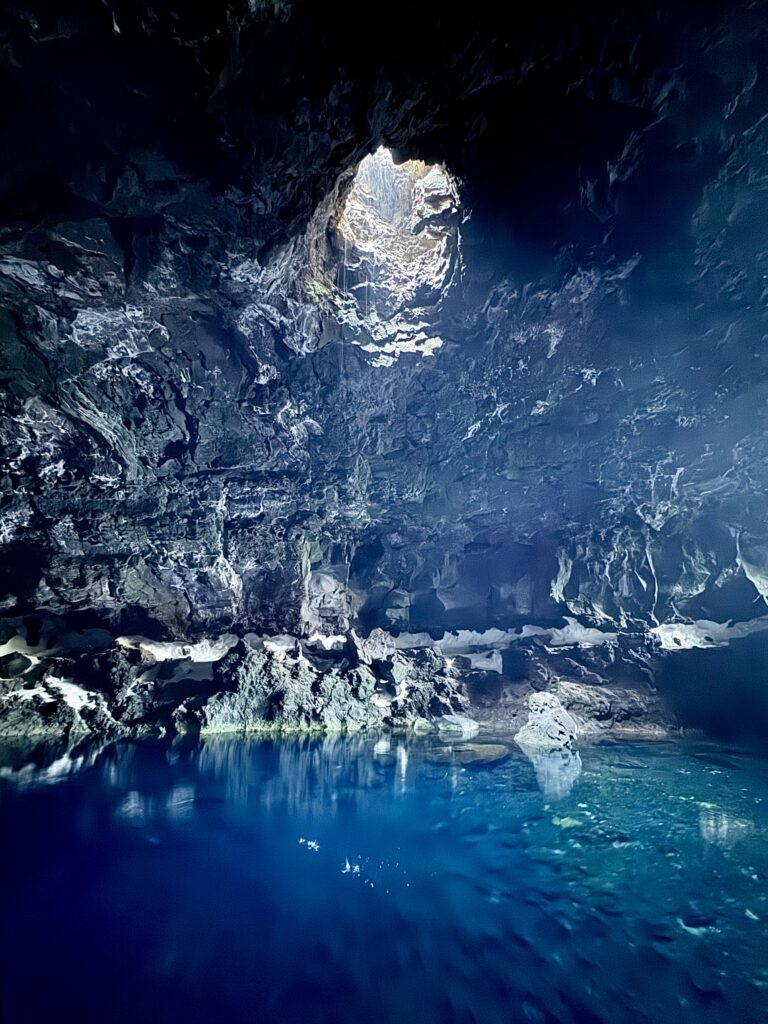
Jameos del Agua & Cueva de los Verdes:
Although these are separate features they both are part of an extremely long subterranean volcanic tube stretching from the heart of Monte Corona out into the Atlantic. The Jameos del Agua are built around a section of this tube located at the coast where the roof has collapsed in several sections. It includes an auditorium whose volcanic roof creates excellent acoustics and a natural underground lake featuring the island’s unique tiny blind white crabs. The Cueva de los Verdes takes visitors on a 40-minute walk through some of the more interesting and historic sections of this volcanic tunnel. Other sections of the tunnel can be accessed (with care) by the more adventurous.
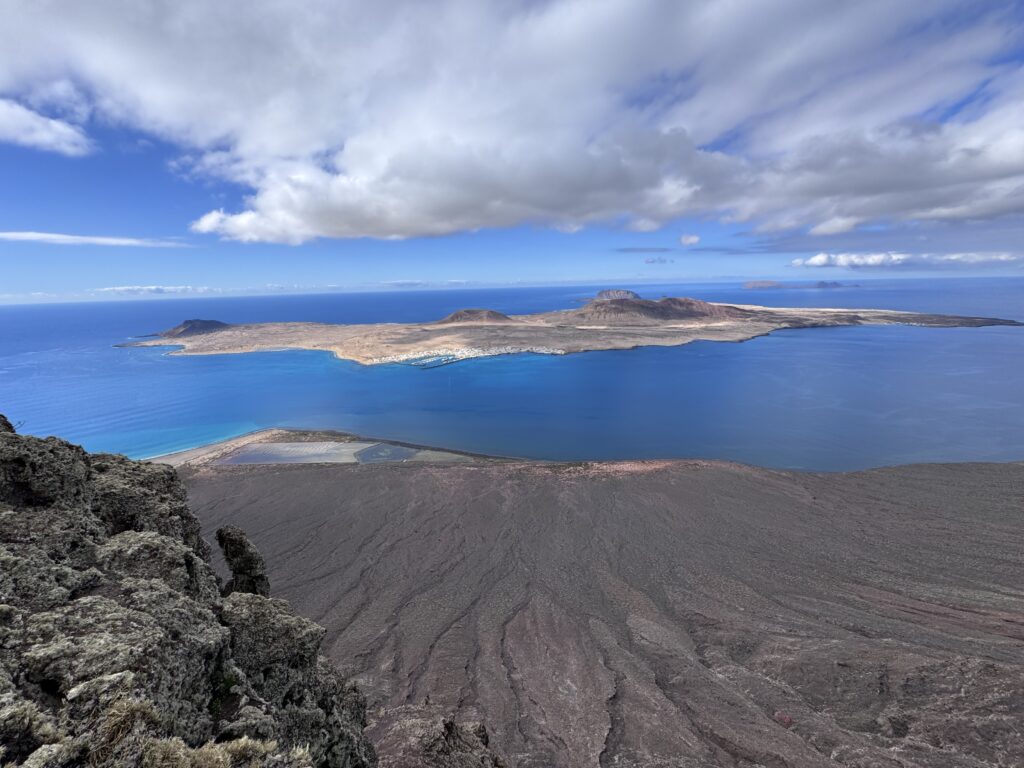
Mirador del Rio: This attractive building, housing a bar and restaurant, is perched high on the cliff-top which faces the island of La Graciosa. The view is quite magnificent although we take to visitors on a short walk to the left of the entrance, where they can have the same view without having to pay for it!


